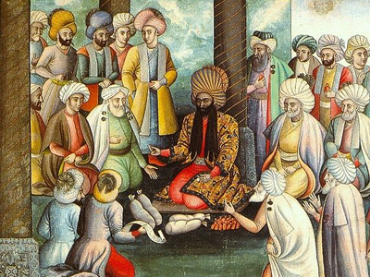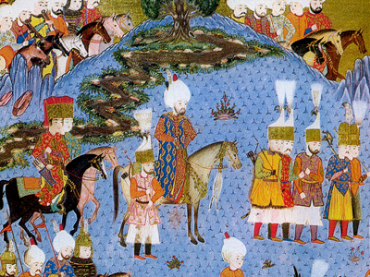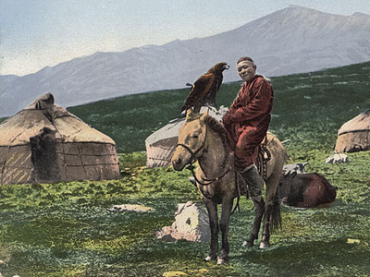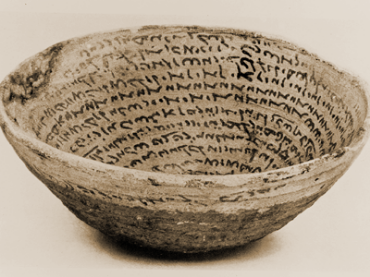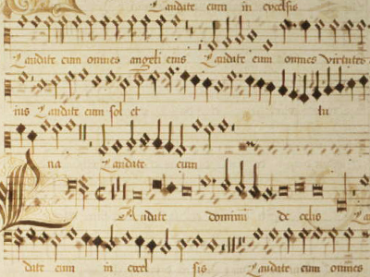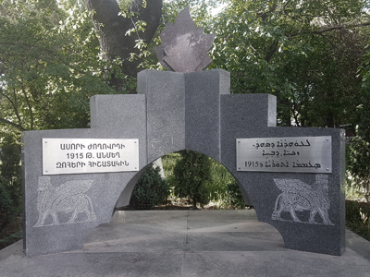History
A Third Century Etruscan Tomb
Series: Analecta Gorgiana 216
ISBN: 978-1-60724-445-5
This article published objects housed in the Museum of Fine Arts in Boston believed to represent the complete equipment of a tomb at Chiusi.
$40.00
The Rise of Romanesque Sculpture
Series: Analecta Gorgiana 217
ISBN: 978-1-60724-446-2
Porter explains the sudden appearance of Romanesque sculpture in the 12th century AD by suggesting an origin in the sculpture of Lombardy.
$36.00
An East Syrian Manuscript of the Syriac 'Masora' Dated to 899 CE (Volume 1)
A Facsimile Reproduction of British Library, Add. MS 12138
Prepared by Jonathan Loopstra
ISBN: 978-1-61143-896-3
This unique manuscript of the East Syrian Syriac ‘Masora’ is essential for any study of early Syriac vocalization, accentuation, and punctuation. This volume presents a facsimile reproduction of this ‘masoretic’ manuscript. An introduction and comprehensive scriptural indices will be included in a forthcoming volume.
$263.00
Two Marbles in the Museum of Fine Arts, Boston
By Ella Hoghton
Series: Analecta Gorgiana 218
ISBN: 978-1-60724-447-9
In this paper Houghton addresses two problematic Italian Renaissance sculptures whose artists are unknown, the portrait bust of a youth and that of a Roman emperor.
$39.00
Greek Inscriptions from Corinth II
Series: Analecta Gorgiana 219
ISBN: 978-1-60724-448-6
This paper presents the very few surviving inscriptions from this period before Mummius' sack of Corinth and includes some of the few Greek decrees known at the time of the writing of the paper.
$44.00
The Theory of Gothic Architecture and the Effect of Shellfire at Rheims and Soissons
By Roger Gilman
Series: Analecta Gorgiana 220
ISBN: 978-1-60724-449-3
This paper reviews these competing theories of the definition of 'Gothic' and the way in which this style developed, presenting an overview of the difficulties involved in assigning a single name to a developing form of human expression
$38.00
The "Ludovisi Throne" and the Boston Relief
Series: Analecta Gorgiana 221
ISBN: 978-1-60724-450-9
In this article Harriet Boyd Hawes, groundbreaking archaeologist, nurse, and relief worker, suggests that the reliefs are the adornments of a couch-altar that stood in the sanctuary which Themistocles restored for the Lycomids at Phlya..
$37.00
Pilgrimage Sculpture
Series: Analecta Gorgiana 222
ISBN: 978-1-60724-451-6
Arthur Kingsley Porter here traces the roots of Renaissance sculpture to the smaller decorative sculptures found on the outside of churches and other buildings beginning around the turn of the first millennium A.D.
$42.00
The Neronian Sacra Via
Series: Analecta Gorgiana 223
ISBN: 978-1-60724-452-3
Esther van Deman reconstructs the structure of the Neronian Via Sacra (one of the arterial roads leading through the Roman Forum), which was refurbished during his reign with colonnades.
$40.00
The Deities of the Sacred Axe
Series: Analecta Gorgiana 224
ISBN: 978-1-60724-453-0
In this paper Margaret Waits offers an explanation for the pervasive and enigmatic symbol of the double-axe in Mycenaean culture with special reference to the religions of Greece and Asia Minor
$37.00
Erechtheum Papers
Series: Analecta Gorgiana 225
ISBN: 978-1-60724-454-7
This series of papers presents a thorough and enlightening overview of the nature of the Erechtheion's remains, its history of renovation and destruction, and the purposes to which it may have been put.
$51.00
Studies of the Exploits of Heracles on Vases
By Stephen Luce
Series: Analecta Gorgiana 226
ISBN: 978-1-60724-455-4
This paper discusses the tales of Heracles as told in vase-paintings, which often represent earlier or more popular versions of the stories than those preserved in upper-class literature.
$36.00
The House of Caligula
Series: Analecta Gorgiana 227
ISBN: 978-1-60724-456-1
Esther van Deman addresses the location of the house of Caligula which is mentioned in literature but not readily apparent to excavators, can be found at the Northwest corner of the Palatine.
$37.00
The Sculptured Parapet of Athena Nike
Series: Analecta Gorgiana 228
ISBN: 978-1-60724-457-8
William Dinsmoor, one of the experts who directed the first reconstruction of the Athenian Acropolis, here addresses the problem of the arrangement of the sculptures on the parapet of the temple of Athena Nike on the Acropolis.
$37.00
Tribute Assessments in the Athenian Empire from 454 to 440 B. C.
Series: Analecta Gorgiana 229
ISBN: 978-1-60724-458-5
Benjamin Meritt, renowned scholar of Greek epigraphy, provides transcription, text, and commentary on the surviving lists of tribute paid to Athens under the Delian league.
$38.00
Five Transliterated Aramaic Inscriptions
Series: Analecta Gorgiana 230
ISBN: 978-1-60724-459-2
William Newbold deciphers inscriptions found under the soot and lava of Vesuvius in which Aramaic speakers used Greek and Latin letters to render their native tongue, occasionally in a mixture of Aramaic and Latin.
$39.00
Mycenaean Plumes
Series: Analecta Gorgiana 231
ISBN: 978-1-60724-460-8
Holland uses sculpture to suggest that these ornaments were meant to be worn in womens' headdresses as a development from feathered crowns worn in earlier times and possibly connected to the iconography of the sphinx.
$37.00
Excavations in the Theatre District and Tombs of Corinth in 1929
Series: Analecta Gorgiana 232
ISBN: 978-1-60724-461-5
This is the site report from the first excavation of two key areas in Corinth, the theater district and the tombs.
$37.00
Jointed Dolls in Antiquity
Series: Analecta Gorgiana 233
ISBN: 978-1-60724-462-2
Kate Elderkin presents an enjoyable overview not only of the nature of children's dolls in Antiquity, but the customs surrounding their use and subsequent dedication when the owner reached adulthood.
$35.00
Excavations in the North Cemetery at Corinth in 1930
Series: Analecta Gorgiana 234
ISBN: 978-1-60724-463-9
This is the site report from the excavation of the North cemetery in Corinth and represents a continuation of the report from the 1929 season, which began the excavation.
$36.00
The Greek stoa North of the Temple at Corinth
Series: Analecta Gorgiana 235
ISBN: 978-1-60724-464-6
This site report details the finding of a complicated site in the city of Corinth where a series of Stoai and temples were built over the course of many years.
$37.00
The Corinthian Kerameikos
Series: Analecta Gorgiana 236
ISBN: 978-1-60724-465-3
This is the site report from the excavation of the kerameikos in Corinth and represents a continuation of the report from the 1929 season, which began the excavation.
$37.00
A Comparison of Eskimo and Palaeolithic Art
Series: Analecta Gorgiana 237
ISBN: 978-1-60724-466-0
This paper takes as its starting point the theory that Eskimos came to the Americas from Paleolithic Europe, then compares the artwork of both cultures to see if there are any similarities to support this hypothesis.
$48.00
The Burning of the Opisthodomos at Athens.
Series: Analecta Gorgiana 238
ISBN: 978-1-60724-467-7
In this paper William Dinsmoor, a historian of architecture and one of the scholars involved in the rebuilding of the Acropolis in the early 20th century, here uses a variety of evidence to set a date for this burning.
$41.00
The Sanctuary of Asklepios and Hygieia at Corinth
Series: Analecta Gorgiana 239
ISBN: 978-1-60724-468-4
In this paper de Waele gives the excavation report for a medium-sized Asklepeion near the northern border of the Corinthian demos, providing a perspective on the smaller local temples of Asklepios.
$39.00
Filter by
Filter by price
Filter by manufacturer

